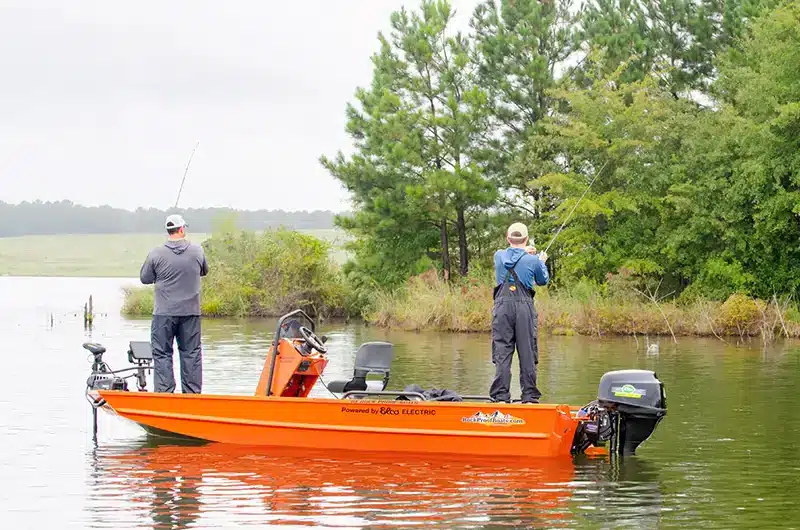
People are beginning to take a second look at the size of their carbon footprints these days, and that includes boat owners. The question of whether or not to switch to an electric outboard is worth serious investigation. Just as electric cars are increasing their presence on the roads as alternative powers cut inroads into the dependence on petrol. The thought of having an electric outboard motor is seeming less and less alien to captains and crews alike.
The pros of electric motors:
To be sure, there is plenty to be said for going green on your propulsion choice. Exceptionally quiet, clean, efficient and sustainable, electric outboards largely avoid the harmful environmental impacts of gas-powered outboard motors. Which release carbon monoxide and nitrogen oxide while underway. Electric outboards emit zero exhaust and carry an exceptionally small carbon footprint. Especially if their batteries are charged by solar or wind power. Another perk – they have no transmissions, requiring little maintenance while allowing boaters in cooler climates to extend their boating season. The fall – a time when gas engines are notoriously unreliable if a quick start is needed.
While some may think of electric outboards as being the new kids on the block, that really isn’t the case. Indeed, these motors have powered boats since the 1880s. In fact, Elco Motor Yachts, LLC, located in Lake George, New York, has been making electric inboard motors since 1893. That year they ferried more than a million people at the Chicago World’s Fair while launching 55 original models. About 15 years ago they added electric outboards to their line-up and now sport models ranging from 5- to 50-h.p. Ray Electric Outboards, which has been building electric outboards since 1974 and produced the first model designed and patented as a primary power electric outboard. Other top electric outboard builders worth considering include ePropulsion, Torquedo, and Mercury Outboards.
The Cons of electric Motors:
Of course, the nock on electric outboards has always been the price of both the outboard and its power source, usually Lithium iron marine batteries (LiFePO4). As a rule, electric outboards tend to cost more than standard outboards or similar size in today’s market. The real financial hurdle, however, is that Lithium batteries cost about three times more than traditional marine batteries. True, they weigh half as much and last four times longer than flooded lead acid batteries (up to 20 years). They are exceptionally durable, fully sealed and allow 100% DoD (Depth of Discharge) with no ill effects. It’s a lot of money to pay up front and you’ll need to keep your vessel for several years to realize any substantial savings. Still, it’s a good investment if you can swing it because you’ll no longer be paying for fuel.
Two Key Factors:
Whether an electric motor is right for you boils down to two primary considerations: cost and application. From a financial standpoint, it either fits your budget or it doesn’t – there isn’t a lot of wiggle room on this point. In terms of application, some freshwaters prohibit gas motors these days so that can be a selling point for some.
As a general rule, figure any vessel on which you run four hours or less a day is a good candidate for an electric outboard. That’s about how long you have before the batteries need recharging. Most recreational boaters fall within this range. Keep in mind that it’s also possible to add more batteries in parallel (at more cost) if you want to increase run time. Adding solar power or wind power can also help you recharge while underway, extending run times slightly.
Electric engines don’t jump out of the hole or accelerate fast enough for water and tow sports enthusiasts to get excited about making the switch. For the go-fast crowd and captains on a limited budget, it may take time for further technological breakthroughs before you can say full speed ahead.
Bottom Line:
These engines are built for efficient cruising, think sailboats, pontoon boats, dinghies and displacement hulls. If your idea of a day on the water is a relaxing cruise, sight-seeing, or trip across the bay for some waterfront dining, it may be time to set course to the nearest dealer.
UNMATCHED MEMBER BENEFITS
Sea Tow has been the premier leader in on-water boating assistance since 1983. With Sea Tow, you pay one annual rate and receive the most comprehensive member benefits available. Membership includes a full suite of on-water assistance services for every boat you own, rent, or bareboat charter. Learn more about our membership options today. To find the Sea Tow closest to you, use the service locator or call our 24/7 Customer Care Team at 800-4-SEATOW.
